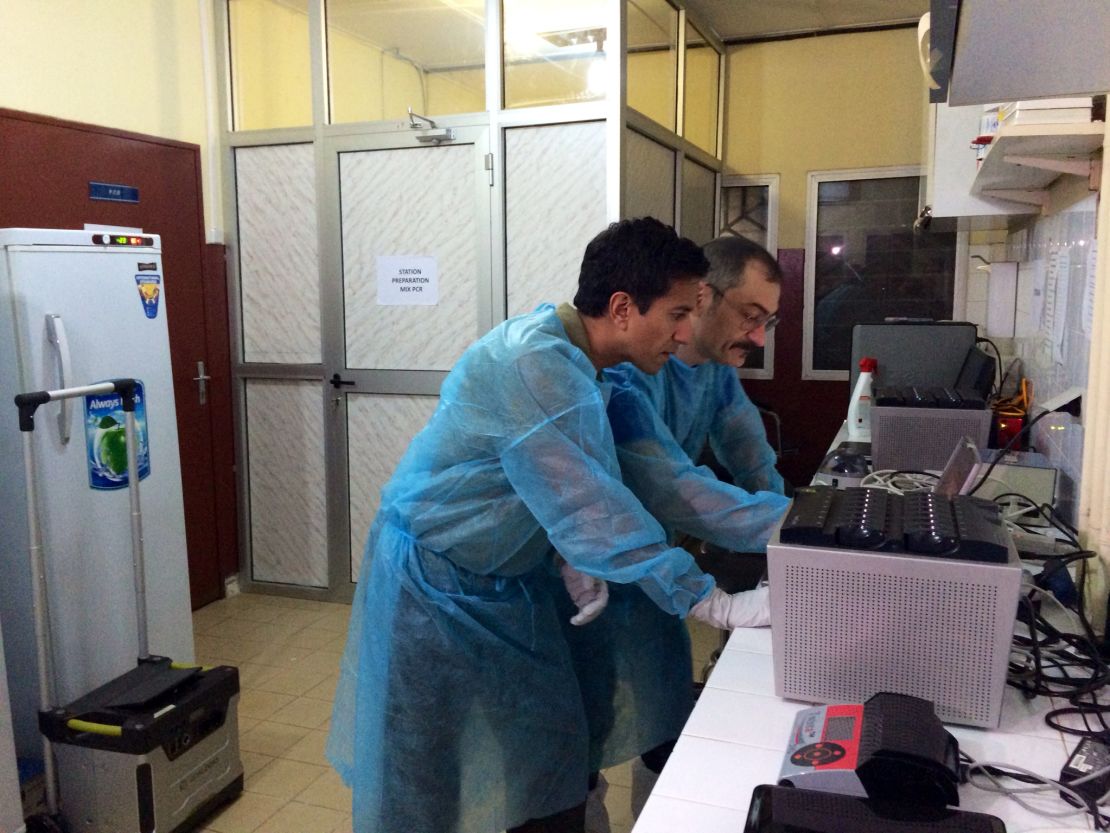Story highlights
At least 759 cases have been reported since March
WHO is going to send teams to help locals fight the epidemic
Ebola virus outbreaks are usually confined to remote areas, but this one is different
The Ebola epidemic isn’t getting any better in Africa.
The World Health Organization reports there have been 759 cases, including 467 deaths in Guinea, Sierra Leone and Liberia since the outbreak began in March, according to a statement the organization released on Tuesday.
The World Health Organization has said “drastic action is needed” to stop the deadly outbreak in West Africa. It has sent teams of experts to help locals deal with the epidemic. WHO will meet this week to discuss how to contain it.
Relief workers on the ground said the epidemic has hit unprecedented proportions.
“The epidemic is out of control,” said Dr. Bart Janssens, director of operations for Doctors Without Borders.
Complicating matters, the countries hit hardest by the epidemic have major medical infrastructure challenges. There is also a real sense of mistrust toward health workers from communities. In Sierra Leone and Guinea, WHO has said that community members have thrown stones at health care workers trying to investigate the outbreak.
In April, CNN Chief Medical Correspondent Dr. Sanjay Gupta traveled to Conakry, Guinea, to report on what was being done to treat patients and contain the outbreak.

“It took only moments to feel the impact of what was happening here,” Gupta wrote after landing in Conakry. “There is a lot we know about Ebola, and it scares us almost as much as what we don’t know.”
Ebola outbreaks usually are confined to remote areas, making the disease easier to contain. But this outbreak is different; patients have been identified in 60 locations in Guinea, Sierra Leone and Liberia.
Officials believe the wide footprint of this outbreak is partly because of the proximity between the jungle where the virus was first identified and cities such as Conakry. The capital in Guinea has a population of 2 million and an international airport.
People are traveling without realizing they’re carrying the deadly virus. It can take between two and 21 days after exposure for someone to feel sick.
Ebola is a violent killer. The symptoms, at first, mimic the flu: headache, fever, fatigue. What comes next sounds like something out of a horror movie: significant diarrhea and vomiting, while the virus shuts off the blood’s ability to clot.
As a result, patients often suffer internal and external hemorrhaging. Many die in an average of 10 days.
Doctors Without Borders, also known as Médecins Sans Frontières, has been working to fight the epidemic since March. The group has sent more than 300 staff members and 40 tons of equipment and supplies to the region to help fight the epidemic.
Still, the group warns, it’s not enough.
“Despite the human resources and equipment deployed by MSF in the three affected countries, we are no longer able to send teams to the new outbreak sites.”
The good news is that Ebola isn’t as easily spread as one may think. A patient isn’t contagious – meaning they can’t spread the virus to other people – until they are already showing symptoms.
Serious protective measures
Inside the isolation treatment areas in Conakry, doctors focus on keeping the patients hydrated with IV drips and other liquid nutrients. Health officials have urged residents to seek treatment at the first sign of flu-like symptoms.
There is no cure or vaccine to treat Ebola, but MSF has shown it doesn’t have to be a death sentence if it’s treated early. Ebola typically kills 90% of patients. This outbreak, the death rate has dropped to roughly 60%.
The outbreak will be considered contained after 42 days – twice the incubation period – with no new Ebola cases.
READ: Get the fast facts on Ebola


